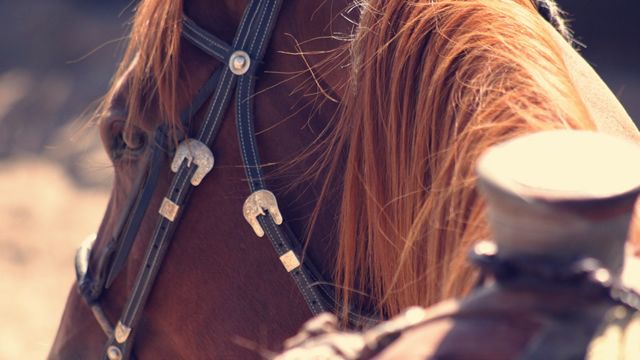Empirical Insight
What Do You Mean by Soft Feel?
Written by Martin Black
This article originally appeared in Eclectic Horseman Issue No.72
What are people talking about when they mention “a soft feel”?
What I believe a soft feel is referring to is when the rider draws on the reins and the horse responds with out any resistance through the body down to the feet. At the same time the horse should respond likewise to the riders’ legs, seat and body rhythm.
What I see in a big percent of riders is that the horse may be responsive to the bit. When the reins tighten, the horse gives in the poll and the nose comes back vertically. Some will have horizontal flexion when the feet are stopped.
What I like to see is the “soft feel” or light contact carry through not only in the walk and trot, stopping backing and making circles, but at any speed and any maneuver. The same soft feel we have with the reins, we should have with our legs. If we develop enough feel with our hands and legs and our horse is familiar with the job we are asking, we should be able to use a lot of body language or rhythm and our horse can follow us just like we are leading a dance and they are following. We shouldn’t need a lot of obvious communication if our dancing partner is assertive and willing. But at the same time, we develop a feel or rhythm to stay together, one leading, one following.
We don’t need to be desensitizing a horse to the point that we have to use pain or fear to get a response. This can get in the way of maintaining a soft feel. The horse needs to be safe but we shouldn’t need to make him unresponsive. The more experience we have, the more we can anticipate what the horse’s response or next move will be and the more we can enhance or inhibit his thoughts and actions in the direction we want. It is a lot easier to maintain the soft feel with a horse if we have life in his feet. It is hard to direct a horse that isn’t moving, or isn’t moving willingly.
When a horse is moving you can adjust the comfort areas to help him learn to follow you. He will seek comfort. It takes relief for pressure to be effective and pressure for relief to be effective. One of the arts of horsemanship is to find and refine a balance between pressure and relief. You don’t need to use pain or fear to get a response.
Most horses are going to start out being uncomfortable with a rider on their back that is not in rhythm with their movement. If the rider is tight or not in sync with the horse, the horse will not be as content as if the rider’s movement offers no resistance to the horse.
If we start out with a horse that is tight, whether it is a green horse that is unsure of his well-being or an experienced horse that is sure of his well-being, we should first get the horse confident that he can relax and we can have one rhythm like dancers. You need to get with his rhythm first, then start altering his movement to get him with your movement.
This may mean if the horse is too confused and can’t follow what you are expecting of him, you need to get with him— we need to learn to go with the horse until the horse can learn to go with the person. Drop back to a level that he can be more comfortable with. The horse is always willing if he is confident he can maintain comfort, which is the major motivator for a horse. Fear causes them to react out of self-preservation; this is a reaction not a thought process. Pain causes them to resist or protect themselves and if they cannot find protection they accept and tolerate the pain. Although pain can get a thoughtful response, it usually isn’t a willing response.
The more sensitive we are (every time we touch the horse), the more the horse can be sensitive to us in a positive way and this is when we can develop the soft feel. We have to develop a feel with our horse before we can develop a soft feel.
The horse will have this soft feel if we don’t cause resistance. The horse will not resist comfort, this is the major motivator in a horses’ life. What he looks forward to in life is comfort. If we can learn how to offer him comfort and show him how to avoid discomfort, he will follow a soft feel with us.
This article originally appeared in Eclectic Horseman Issue No.72


